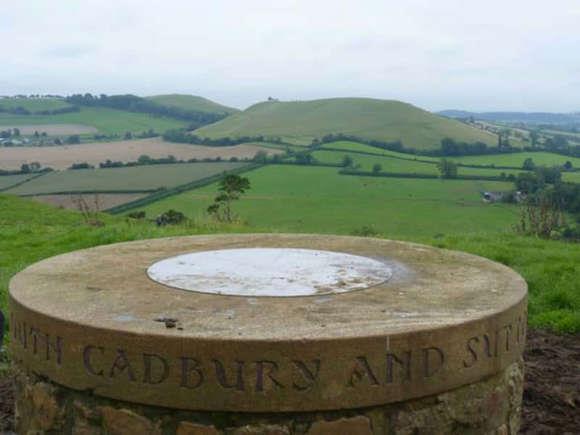




Everything For The Metal Detectorist - King Arthur Origins


King Arthur
Flag of England

Irish Flag
Flag Menu
Union Flag
Copyright All Rights Reserved by Nigel G Wilcox E-Mail: ngwilcox100@gmail.com
The Paragon Of Metal Detecting
& Archaeology
& Archaeology
5. Menu
Pages
Story by Rachel Seigel • .07.24 Factinate Media Group/msn.com [ 05.10.24]
Powered By Sispro1
Designed by Nigel G Wilcox
Member NCMD
The Truth Behind The Legend Of King Arthur
2-5 Cont...

7. This All Came From A Book, But You Can't Read It
©Wikimedia Commons
Geoffrey of Monmouth’s 12th century book History of Kings of Britain was the first to write the full life story of Arthur, and was the first to mention Guinevere, Merlin, Lancelot, and of course the famed sword Excalibur (which he called Caliburn). He claimed that the book was based on a lost Celtic manuscript that he alone could study, but its contents are as much myth as they are fact (probably more). Much of what people believe about Arthur stems from this book.
8. Monty Python and the... Pearl Rimmed Caulron?
Wikimedia Commons
A popular theme in Arthurian legend was his quest for a holy vessel, but it wasn't always the Holy Grail that he sought. In the story Preiddeu Annwfn, or "Spoils of the Otherworld," Arthur and his warriors sail to the Celtic Otherworld to procure the pearl-rimmed Cauldron of Annwfn. In Medieval times, the vessel morphed into a Holy Grail, and the Knights of the Round Table searched all of Britain for it.
©Wikimedia Commons
Geoffrey of Monmouth’s 12th century book History of Kings of Britain was the first to write the full life story of Arthur, and was the first to mention Guinevere, Merlin, Lancelot, and of course the famed sword Excalibur (which he called Caliburn). He claimed that the book was based on a lost Celtic manuscript that he alone could study, but its contents are as much myth as they are fact (probably more). Much of what people believe about Arthur stems from this book.
8. Monty Python and the... Pearl Rimmed Caulron?
Wikimedia Commons
A popular theme in Arthurian legend was his quest for a holy vessel, but it wasn't always the Holy Grail that he sought. In the story Preiddeu Annwfn, or "Spoils of the Otherworld," Arthur and his warriors sail to the Celtic Otherworld to procure the pearl-rimmed Cauldron of Annwfn. In Medieval times, the vessel morphed into a Holy Grail, and the Knights of the Round Table searched all of Britain for it.


9. Finding Camelot ©Geograph
In the 1960s, archaeologists discovered stone remains of a fortress at Cadbury Hill. The fortress was located on the supposed site of Camelot, and pottery found there matched the correct time period in which Arthur might have lived. The fortress was described as a grand structure belonging to an army leader rather than a king, lending further credence to the theory that Arthur may have been a general, not a monarch.
In the 1960s, archaeologists discovered stone remains of a fortress at Cadbury Hill. The fortress was located on the supposed site of Camelot, and pottery found there matched the correct time period in which Arthur might have lived. The fortress was described as a grand structure belonging to an army leader rather than a king, lending further credence to the theory that Arthur may have been a general, not a monarch.

10. Fanning the Myth ©Getty Images
Throughout time, English rulers ranging from Henry VIII to Queen Victoria used Arthur’s legend for political purposes. In modern times, writers, filmmakers, painters and photographers have done their part to grow the myth, each putting their own spin on the story. Nobody seems all that concerned with the truth, especially when it gets in the way of a really good story!
Throughout time, English rulers ranging from Henry VIII to Queen Victoria used Arthur’s legend for political purposes. In modern times, writers, filmmakers, painters and photographers have done their part to grow the myth, each putting their own spin on the story. Nobody seems all that concerned with the truth, especially when it gets in the way of a really good story!
11. A French Invention ©Wikimedia Commons
Though there may have been a King Arthur, and he likely would have had a fortress that he called home, "Camelot" as we know it was actually invented in the 12th century by a French poet named Chrétien de Troyes. Whether the castle ever existed or not, stories about Camelot and the Knights of the Round Table were found in hundreds of manuscripts between the 11th and 15th centuries and exist in dozens of languages.
Though there may have been a King Arthur, and he likely would have had a fortress that he called home, "Camelot" as we know it was actually invented in the 12th century by a French poet named Chrétien de Troyes. Whether the castle ever existed or not, stories about Camelot and the Knights of the Round Table were found in hundreds of manuscripts between the 11th and 15th centuries and exist in dozens of languages.


12. Scottish Chieftain ©Wallpaper Flare
In 2015, Dr. Andrew Breeze, a professional philologist and Celticist from the University of Navarre in Spain, published a paper claiming that Arthur was not a Roman or a monarch, but was instead a chieftain or a warrior, living and fighting in Scotland. Breeze claimed to have located the actual sites of the battles listed in Nennius’ history, and they were all in Northumberland and southern Scotland. He also claimed that the famous Battle of Badon wasn’t fought by Arthur at all. Breeze continues to adamantly defend his theory, though it has largely been met with skepticism by the greater academic community.
13. Tomb of Arthur Wikipedia
The legend of King Arthur states that after his death, he was transported to the mythical Isle of Avalon. In 2016, new research suggested that he may have been buried a little closer to home in a field in Shropshire, England. In his book The Lost Tomb of King Arthur, researcher Graham Philips suggested that Arthur s tomb was most likely outside of the village in an old fort known as "The Berth," or perhaps at a former chapel nearby. Early exploration uncovered what Philips believed to be Arthur s shield, no sign of that legendary sword though.
In 2015, Dr. Andrew Breeze, a professional philologist and Celticist from the University of Navarre in Spain, published a paper claiming that Arthur was not a Roman or a monarch, but was instead a chieftain or a warrior, living and fighting in Scotland. Breeze claimed to have located the actual sites of the battles listed in Nennius’ history, and they were all in Northumberland and southern Scotland. He also claimed that the famous Battle of Badon wasn’t fought by Arthur at all. Breeze continues to adamantly defend his theory, though it has largely been met with skepticism by the greater academic community.
13. Tomb of Arthur Wikipedia
The legend of King Arthur states that after his death, he was transported to the mythical Isle of Avalon. In 2016, new research suggested that he may have been buried a little closer to home in a field in Shropshire, England. In his book The Lost Tomb of King Arthur, researcher Graham Philips suggested that Arthur s tomb was most likely outside of the village in an old fort known as "The Berth," or perhaps at a former chapel nearby. Early exploration uncovered what Philips believed to be Arthur s shield, no sign of that legendary sword though.


14. Courtly Love ©Wikimedia Commons
The romantic version of Arthur that exists in legend today was created in a period when, believe it or not, romantic stories were extremely popular. In 15th century England, ideas of chivalry and courtly love were all the rage, and would have been requested by powerful women in the English and French courts. Sir Thomas Malory’s Le Mort d’Arthur was a romantic tale that created the iconic image of Arthur pulling the sword from the stone. So, sadly, while that is an undeniably epic image of the legendary king, it almost certainly has absolutely nothing to do with an historical King Arthur.
The romantic version of Arthur that exists in legend today was created in a period when, believe it or not, romantic stories were extremely popular. In 15th century England, ideas of chivalry and courtly love were all the rage, and would have been requested by powerful women in the English and French courts. Sir Thomas Malory’s Le Mort d’Arthur was a romantic tale that created the iconic image of Arthur pulling the sword from the stone. So, sadly, while that is an undeniably epic image of the legendary king, it almost certainly has absolutely nothing to do with an historical King Arthur.




















